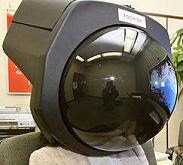Jan 26, 2008
Jan 23, 2008
Jan 22, 2008
Jan 10, 2008
food stuffs
- Lipids are broadly defined as any fat-soluble (lipophilic), naturally-occurring molecules, such as fats, oils, waxes, cholesterol, sterols, fat-soluble vitamins (such as vitamins A, D, E and K), monoglycerides, diglycerides, phospholipids, and others. The main biological functions of lipids include energy storage, acting as structural components of cell membranes, and paticipating as important signaling molecules.
- Carbohydrates or saccharides are simple organic compounds that are aldehydes or ketones with many hydroxyl groups added, usually one on each carbon atom that is not part of the aldehyde or ketone functional group. Carbohydrates are the most abundant of the four major classes of biomolecules, which also include proteins, lipids and nucleic acids.
- Proteins are large organic compounds made of amino acids arranged in a linear chain and joined together by pepride bonds between the carboxyl and amino groups of adjacent amino acid residues.
- Biuret test is used for detecting the presence of peptide bonds. The biuret test relies on the reaction between copper ions and peptide bonds in an alkaline solution. A violet color indicates the presence of proteins. Proteins give a strong biuret reaction because they contain a large number of peptide bonds
- Benedict's reagent is used as a test for the presence of reducing sugars such as glucose, fructose, galactose, lactose and maltose, or more generally for the presence of aldehydes (except aromatic ones). It can be prepared from sodium carbonates, sodium citrate and copper sulfate. It is often used in place of Fehling’s solution. To test for the presence of reducing sugars in food, the food sample is dissolved in water, and a small amount of Benedict's reagent is added. The mixture is heated in a boiling water bath, and any precipitate formed is recorded as a positive result for the presence of reducing sugars in the food. Sucrose (table sugar) is a non-reducing sugar and thus does not react with Benedict's reagent.
- The Iodine test is used to test for the presence of starch. Iodine solution — iodine dissolved in an aqueous solution of potassium iodide — reacts with starch producing a deep blue-black color. Iodine solution will also react with glycogen, although the color produced is browner and much less intense.
-A leavening agent (sometimes called just leavening or leaven) is a substance used in doughs and batters that causes a foaming action. The leavening agent reacts with moisture, heat, acidity, or other triggers to produce gas that becomes trapped as bubbles within the dough. When a dough or batter is baked, it "sets" and the holes left by the gas bubbles remain, giving breads, cakes, and other baked goods their soft, sponge-like textures.
Chemical leavening agents include:
• baking powder
• baking soda (a.k.a., sodium bicarbonate)
• ammonium bicarbonate (a.k.a., hartshorn, horn salt, bakers ammonia)
• potassium bicarbonate (a.k.a., potash)
• potassium bitartrate (a.k.a., cream of tartar)
• potassium carbonate (a.k.a., pearlash)
• monocalcium phosphate
Some typical biological leaveners are:
• beer (unpasteurised - live yeast)
• buttermilk
• ginger beer
• kefir
• sourdough starter
• yeast
• yogurt
- Food additives are substances added to food to preserve flavor or improve its taste and appearance. Some additives have been used for centuries; for example, preserving food by pickling (with vinegar), salting, as with bacon, preserving sweets or using sulfur dioxide as in some wines. With the advent of processed foods in the second half of the 20th century, many more additives have been introduced, of both natural and artificial origin.
- http://faculty.clintoncc.suny.edu/faculty/Michael.Gregory/files/Bio%20101/Bio%20101%20Laboratory/Chemical%20Composition%20of%20Cells/Chemical%20Composition%20of%20Cells.htm
- Materials:
Scale
100 g ground cereal per group
250 mL hot water (from faucet)
magnetic stirrer
magnetic stir bar
magnetic retriever
Methods:
STUDENTS:
1. Weigh out 100 grams of ground cereal.
2. Weigh a magnetic stir bar. Take note of weight.
3. Pour cereal into a beaker and add 250 mL of hot water from faucet.
4. Place beaker on magnetic stir plate and drop in the pre-weighed stir
bar into beaker.
5. Turn the stir plate on high and let stir for 5 minutes.
6. Using the magnet retriever take out the magnet and weigh again with
the iron filings it collected.
7. Subtract the weight of the magnetic stir bar from the final weight.
8. Use this number to answer the questions below.
9. Be sure to clean up area and glassware!!
- Carbohydrates or saccharides are simple organic compounds that are aldehydes or ketones with many hydroxyl groups added, usually one on each carbon atom that is not part of the aldehyde or ketone functional group. Carbohydrates are the most abundant of the four major classes of biomolecules, which also include proteins, lipids and nucleic acids.
- Proteins are large organic compounds made of amino acids arranged in a linear chain and joined together by pepride bonds between the carboxyl and amino groups of adjacent amino acid residues.
- Biuret test is used for detecting the presence of peptide bonds. The biuret test relies on the reaction between copper ions and peptide bonds in an alkaline solution. A violet color indicates the presence of proteins. Proteins give a strong biuret reaction because they contain a large number of peptide bonds
- Benedict's reagent is used as a test for the presence of reducing sugars such as glucose, fructose, galactose, lactose and maltose, or more generally for the presence of aldehydes (except aromatic ones). It can be prepared from sodium carbonates, sodium citrate and copper sulfate. It is often used in place of Fehling’s solution. To test for the presence of reducing sugars in food, the food sample is dissolved in water, and a small amount of Benedict's reagent is added. The mixture is heated in a boiling water bath, and any precipitate formed is recorded as a positive result for the presence of reducing sugars in the food. Sucrose (table sugar) is a non-reducing sugar and thus does not react with Benedict's reagent.
- The Iodine test is used to test for the presence of starch. Iodine solution — iodine dissolved in an aqueous solution of potassium iodide — reacts with starch producing a deep blue-black color. Iodine solution will also react with glycogen, although the color produced is browner and much less intense.
-A leavening agent (sometimes called just leavening or leaven) is a substance used in doughs and batters that causes a foaming action. The leavening agent reacts with moisture, heat, acidity, or other triggers to produce gas that becomes trapped as bubbles within the dough. When a dough or batter is baked, it "sets" and the holes left by the gas bubbles remain, giving breads, cakes, and other baked goods their soft, sponge-like textures.
Chemical leavening agents include:
• baking powder
• baking soda (a.k.a., sodium bicarbonate)
• ammonium bicarbonate (a.k.a., hartshorn, horn salt, bakers ammonia)
• potassium bicarbonate (a.k.a., potash)
• potassium bitartrate (a.k.a., cream of tartar)
• potassium carbonate (a.k.a., pearlash)
• monocalcium phosphate
Some typical biological leaveners are:
• beer (unpasteurised - live yeast)
• buttermilk
• ginger beer
• kefir
• sourdough starter
• yeast
• yogurt
- Food additives are substances added to food to preserve flavor or improve its taste and appearance. Some additives have been used for centuries; for example, preserving food by pickling (with vinegar), salting, as with bacon, preserving sweets or using sulfur dioxide as in some wines. With the advent of processed foods in the second half of the 20th century, many more additives have been introduced, of both natural and artificial origin.
- http://faculty.clintoncc.suny.edu/faculty/Michael.Gregory/files/Bio%20101/Bio%20101%20Laboratory/Chemical%20Composition%20of%20Cells/Chemical%20Composition%20of%20Cells.htm
- Materials:
Scale
100 g ground cereal per group
250 mL hot water (from faucet)
magnetic stirrer
magnetic stir bar
magnetic retriever
Methods:
STUDENTS:
1. Weigh out 100 grams of ground cereal.
2. Weigh a magnetic stir bar. Take note of weight.
3. Pour cereal into a beaker and add 250 mL of hot water from faucet.
4. Place beaker on magnetic stir plate and drop in the pre-weighed stir
bar into beaker.
5. Turn the stir plate on high and let stir for 5 minutes.
6. Using the magnet retriever take out the magnet and weigh again with
the iron filings it collected.
7. Subtract the weight of the magnetic stir bar from the final weight.
8. Use this number to answer the questions below.
9. Be sure to clean up area and glassware!!
Jan 4, 2008
Superbad is funny.
Nerdy, slightly antisocial guy trying to get laid?
That's some funny stuff.
And it has Michael Cera. So it makes it better.
That's some funny stuff.
And it has Michael Cera. So it makes it better.
Jan 3, 2008
Jan 2, 2008
hot guys. :3
Labels:
christian bale,
clark gable,
gerard butler,
heath ledger,
hot,
i'd,
john lennon,
men,
mikey way,
sexy
Subscribe to:
Comments (Atom)

























